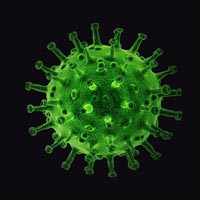Clinical features, severity, and outcomes of patients with COVID-19 infection: A follow-up study

Accepted: 10 September 2021
All claims expressed in this article are solely those of the authors and do not necessarily represent those of their affiliated organizations, or those of the publisher, the editors and the reviewers. Any product that may be evaluated in this article or claim that may be made by its manufacturer is not guaranteed or endorsed by the publisher.
Authors
Few epidemiological investigations explored disease outcomes in patients with COVID-19 in Iraqi Kurdistan. The association of clinical and epidemiological characteristics of COVID-19 patients with outcomes was examined in this study. Patients who were diagnosed with COVID-19 from a private clinic were followed up until recovery or death between 15th August and 20th October 2020. The mean age of the COVID-19 patients was 47.12 (6-90 years). Fatigue (76.15%), myalgia (66.53%), fever (65.33%), cough (62.53%), sweating (58.52%), and headache (56.11%) were the most prevalent symptoms. Most of the patients had mild severity (350, 70.14%) followed by moderate (74, 14.83%), severe (46, 9.22%), and critical (29, 5.81%). The case fatality rate (CFR) was 5.41% (n=27) and was significantly increased with increasing severity; mild (0.0%), moderate (1.35%), severe (10.87%), and critical (72.41%; P<0.001). The patients with the critical and severe situations were significantly older; medians: 67 vs 55 years compared to those patients with moderate and mild situations; medians: 51 vs 45 years; P<0.001. The patients who died were significantly older compared to recovered patients; medians: 65 vs 46 years; P<0.001, respectively. The disease severity was the only factor to predict mortality in patients with COVID-19 disease. Concerning the severity, being older, having anorexia, fatigue, pleurisy, diarrhea, fever, sweating, shortness of breath, and being male were determined to be predictors of severity in COVID-19 patients. The incidence rate of severe/critical conditions was significantly increased with increasing age. The older age was determined to be a predictor for higher mortality.
How to Cite
PAGEPress has chosen to apply the Creative Commons Attribution NonCommercial 4.0 International License (CC BY-NC 4.0) to all manuscripts to be published.

 https://doi.org/10.4081/acbr.2021.159
https://doi.org/10.4081/acbr.2021.159



